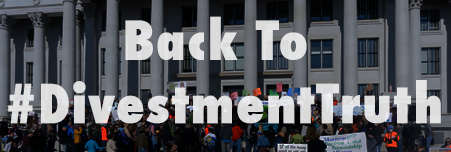On Wednesday, February 25, EPA Administrator Gina McCarthy will testify before a joint hearing of the House Energy and Commerce Subcommittees on Energy and Power and Environment and the Economy. This hearing offers lawmakers an opportunity to question the Administrator about her agency’s Existing Source Rule for power plants—also known as the “Clean Power Plan”—which EPA is promulgating under Section 111(d) of the Clean Air Act. AEA offers the following questions as a sampling of the types of questions the Administrator should answer about her agency’s regulatory agenda:
- A new report released by the Institute for Energy Research highlights the combined effects of government policies on grid reliability. As we note, the North American Electric Reliability Corporation (NERC) estimates that anti-coal policies from EPA could shutter 103 gigawatts of reliable coal-fired generation. That is more than enough power to meet the residential electricity demand of 80 million Americans. Why is EPA not concerned about the reliability of the grid when your policies are taking enough power plants for more than ¼ of America’s population off line?
- FERC Commissioner Philip Moeller has warned that EPA regulations shuttering coal-fired power plants could cause “rolling blackouts” if we have another cold winter like last year’s polar vortex. Why is EPA going forward with rules that will harm the reliability of the grid and may cause blackouts?
- Several state agencies have questioned the legality of certain aspects of the Existing Source Rule. The North Carolina Department of Environment and Natural Resources, for instance, writes in public comments that EPA is imposing “unlawful reductions associated with natural gas dispatching, renewable energy generation, and energy efficiency.”
a. Does EPA have the authority to require states to dispatch natural gas power plants instead of coal? If so, where is that statutory authority in the Clean Air Act?
b. Does EPA have authority to require states to use more renewable sources instead of coal? If so, where is that statutory authority in the Clean Air Act?
c. Does EPA have the authority to require states to use less electricity? If so, where is that statutory authority in the Clean Air Act?
- You have claimed on numerous occasions that “flexibility” for states is a key element of the Existing Source Rule. Yet several states are concerned that EPA’s requirements under the proposed rule are impossible to meet—regardless of any flexibility. In public comments, Alabama’s Department of Environmental Management writes, “there are no viable or cost effective mechanisms by which the goals can be met.” How can EPA’s rule be “flexible” if states don’t believe its goals are even achievable?
- Last week, EPA’s Acting Assistant Administrator for Air and Radiation, Janet McCabe, was asked about whether EPA is double counting health benefits from reducing PM2.5. She testified that EPA “certainly are not double counting. We are very careful in all of our regulations to make sure that we don’t do that.”
However, EPA admits in its RIA for the Existing Source Rule that “it is possible that some costs and benefits estimated in this RIA may account for the same air quality improvements as estimated in the illustrative NAAQS RIAs.” (4-15) If EPA is taking credit for the same benefits in both the NAAQS and the Existing Source Rule, does that not amount to double counting benefits? Why did McCabe testify that EPA is “very careful” not to double count benefits?
- In Massachusetts v. EPA, the U.S. Supreme Court expressed concerns over “precipitate rise in sea levels” and a “rise in global temperatures” associated with climate change. What specific impact does EPA’s Existing Source Rule have on sea levels and global temperatures?
- Last week, EPA official Christopher Grundler announced that the agency would combine three years of volume requirements (2014-2016) under the Renewable Fuel Standard into a single proposed rule to be finalized by November. That means EPA will have missed its 2014 deadline by two years and the 2015 deadline by a year. Given its history of missed deadlines and inaccurate predictions, what makes EPA think it is capable of administering the RFS?





